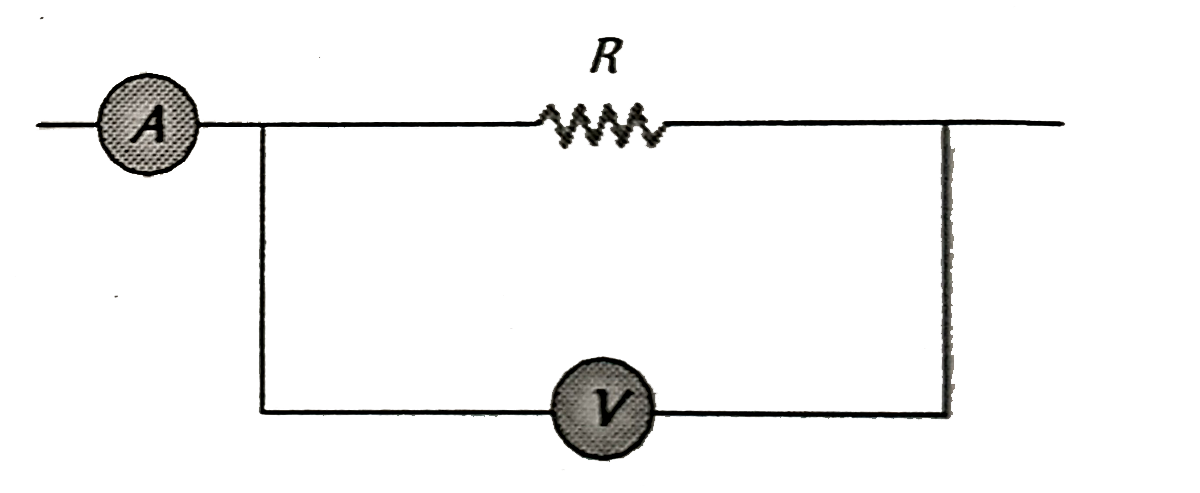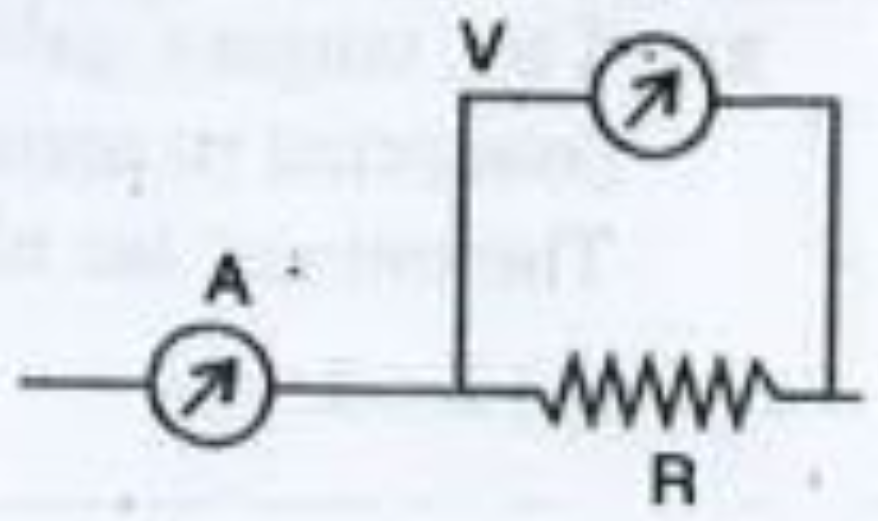The ammeter A reads 2A and the voltmeter V reads 20V, the value of resistance R is (Assuming finite resistance's of ammeter and voltmeter)

Exactly 10 ohm
Less than 10 ohm
More than 10 ohm
We cannot definitely say
The correct Answer is:C
2R>20⇒R=10Ω
Similar Questions
In the adjacent circuit the ammeter reads 5.0 A and voltmeter reads 20V. The value of resistance R is

View Solution[" A non-ideal voltmeter and a non-ideal ammeter are connected as shown in the figure.The reading of "],[" the voltmeter is "20V" and that of the ammeter is "4A" .The value of "R" is : "]
View SolutionAn ammeter A of finite resistance, and a resistor R are joined in series to an ideal cell C. A potentiometer P is joined in parallel to R. The ammeter reading is I0 and the potentiometer reading is V0 . P is now replaced by a voltmeter of finite resistance. The ammeter reading now is I and the voltmeter reading is V.

View SolutionAn ammeter of finite resistance and resistor R are connected in series to an ideal cell. The voltmeter wire P is connected in parallel with R. Ammeter and voltmeter wire reading respectively I_(0) And V_(0) is. P is replaced by a voltmeter of finite resistance. Now the reading of ammeter and voltmeter are I and V respectively.
View SolutionAn ammeter A, a voltmeter V and a resistance R are connected as shown in the figure. If the voltmeter reading is 1.6V and the ammeter reading is 0.4 A, then R is
View SolutionAn ammeter, a voltmeter V and a resistance R are connected as shown
 . Ameneter reads 2 A . Voltmeter reading is 10 V. Then R is
. Ameneter reads 2 A . Voltmeter reading is 10 V. Then R is
View SolutionThe ammeter A reads 2A and the voltmeter V reads 20V, the value of resistance R is (Assuming finite resistance's of ammeter and voltmeter)

View SolutionA student connects a voltmeters, ammeter and resistance according to the circuit given. If the voltmeter reading is 20V and ammeter reading is 4A, then the resistance will be

View Solution
